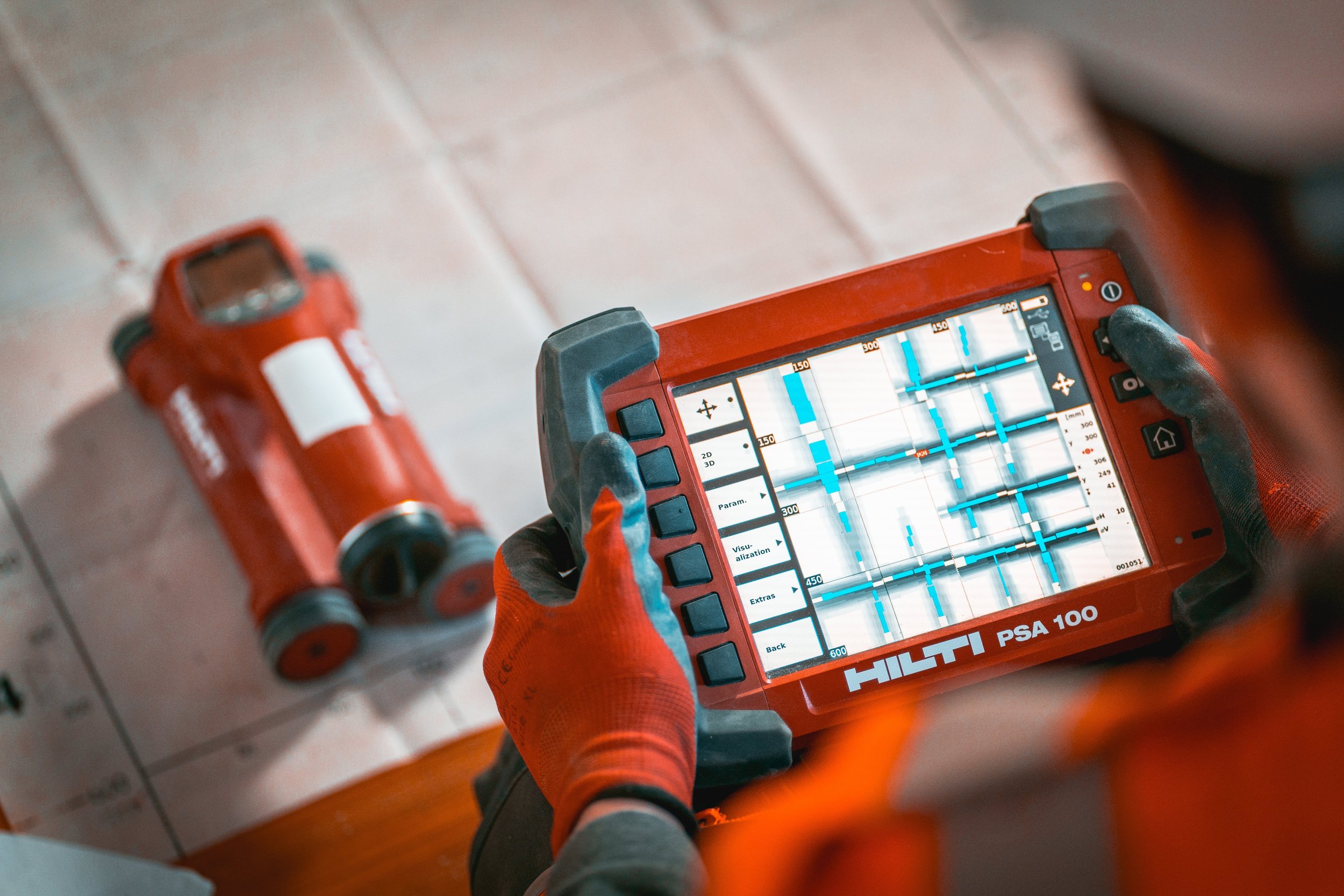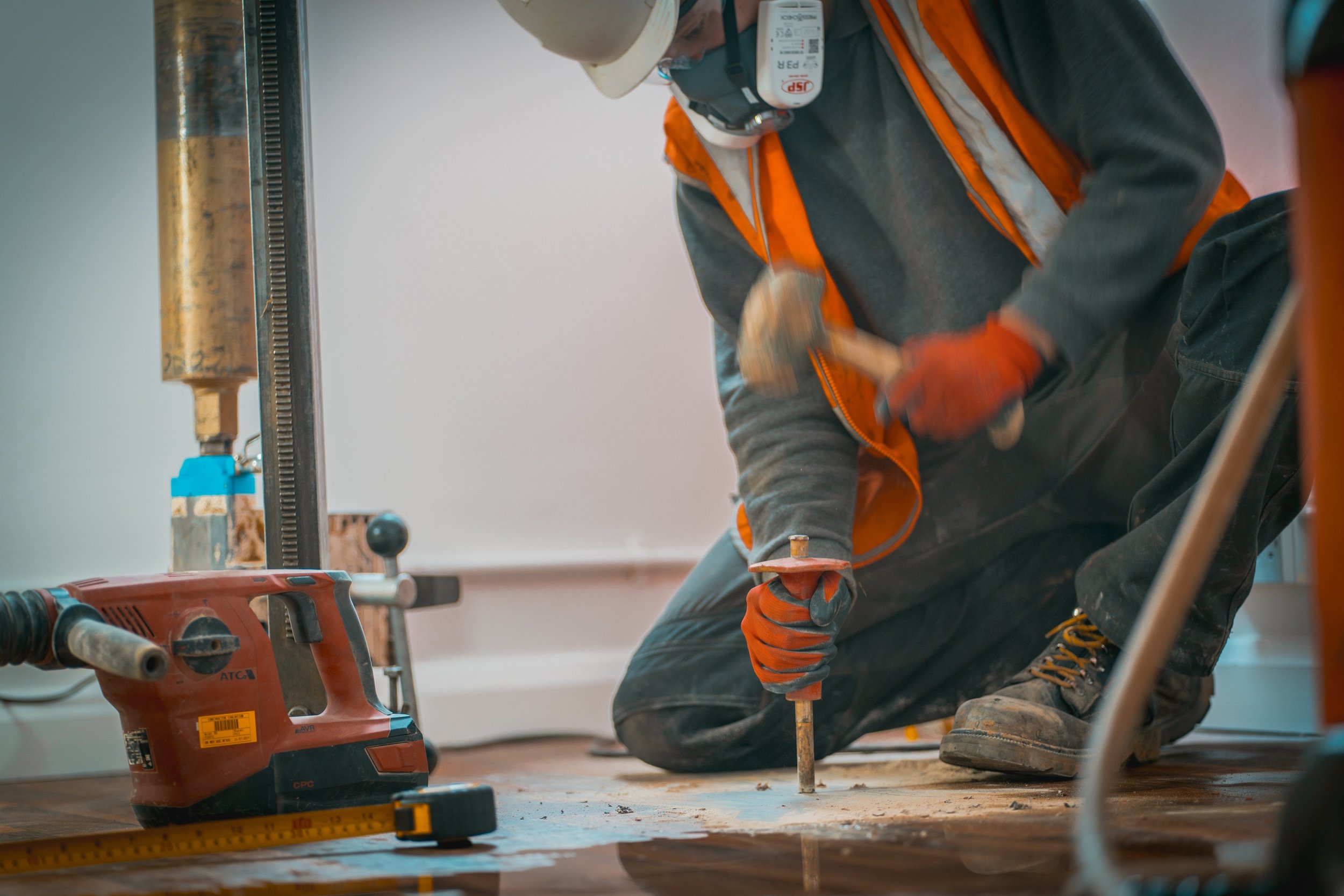
Reinforced Autoclaved Aerated Concrete (RAAC) Inspections
What is RAAC?
Reinforced Autoclaved Aerated Concrete (RAAC) is a lightweight, precast building material that initially gained popularity in construction due to its excellent thermal insulation properties and reduced environmental impact. RAAC is composed of a mixture of cement, lime, water, and fine aggregates, which are aerated using foaming agents during the manufacturing process.
The material is cured in an autoclave, a high-pressure steam chamber, which gives RAAC its distinctive properties, such as high strength-to-weight ratio and moisture resistance. These characteristics made RAAC a popular material for a variety of applications, including walls, roofs, and floors in both residential and commercial buildings.
Issues
Reinforced Autoclaved Aerated Concrete (RAAC) has become a subject of concern within the construction industry recently due to several critical issues. While RAAC was widely appreciated for its lightweight properties and thermal efficiency, there are significant drawbacks that need to be considered.
Deterioration Over Time
One of the primary concerns with RAAC is its susceptibility to deterioration, particularly in older structures. RAAC elements can suffer from water ingress, which leads to loss of strength and integrity. This deterioration is often exacerbated in environments where moisture exposure is high, posing a risk to the stability of buildings.
Limited Load-Bearing Capacity
RAAC possesses a lower load-bearing capacity compared to traditional concrete materials. In applications where heavy loads are expected, RAAC may not provide the necessary structural support.
Vulnerability to Impact
The material is also prone to impact damage. RAAC panels are susceptible to cracking and chipping when subjected to force, which can compromise the overall safety of the structure. Ensuring adequate protection and reinforcement is essential to mitigate these risks.
Fire Resistance Issues
While RAAC has some degree of fire resistance, it does not have the same performance characteristics as traditional concrete. In a fire event, the integrity of RAAC can be compromised, leading to potential failures during critical moments. This necessitates additional fire safety measures and considerations.
Maintenance Challenges
The maintenance of buildings constructed with RAAC can be challenging. The need for regular inspections is crucial to identify and address deterioration early. However, the lightweight and fragile nature of RAAC can make repairs more complex and costly, causing potential delays in maintaining structural integrity.
Regulatory Concerns
In 1996, results obtained from a former government research laboratory (the Building Research Establishment) resulted in the effective banning of RAAC in the UK. This action was mirrored by the European Union in 2006. The decision was based on comprehensive studies revealing potential dangers tied to the material, especially regarding structural integrity. Regulatory bodies in Europe determined that the risks linked to RAAC surpassed any advantages it might offer, deeming it inappropriate for load-bearing applications.
How do you identify RAAC?
The most common and cost effective method of identifying RAAC is visual inspection. A typical visual inspection would include:
Checking for Cracks: Looking for surface cracks, spalling, or any signs of deterioration.
Surface Condition: Assessing the overall condition of the surface. Discolouration, moisture staining, or unusual wear may indicate underlying issues.
Interfacing with Other Materials: Inspecting the joints between RAAC and other building elements, such as brickwork or concrete, for signs of water ingress or movement
Assessing Load-Bearing Elements: Evaluating beams, slabs, and walls to confirm their load-bearing capability.
Deflection Measurements: Taking measurements of any deflections to detect deformation under load. Excessive deflection may indicate a presence of and problems with RAAC elements.
Contact Us
The recent raft of publicity over RAAC in buildings has highlighted importance of RAAC awareness. Please contact us if you believe your structure may contain RAAC. Our team can talk through your options, requirements and advise you on the best course of action. Click here to find out more about our other concrete testing services.
Our Services
Please Click on the tiles below to find out more about the services we offer
Contact Us
If you have any queries about any of our services please contact us, a member of our team will be happy to advise.





